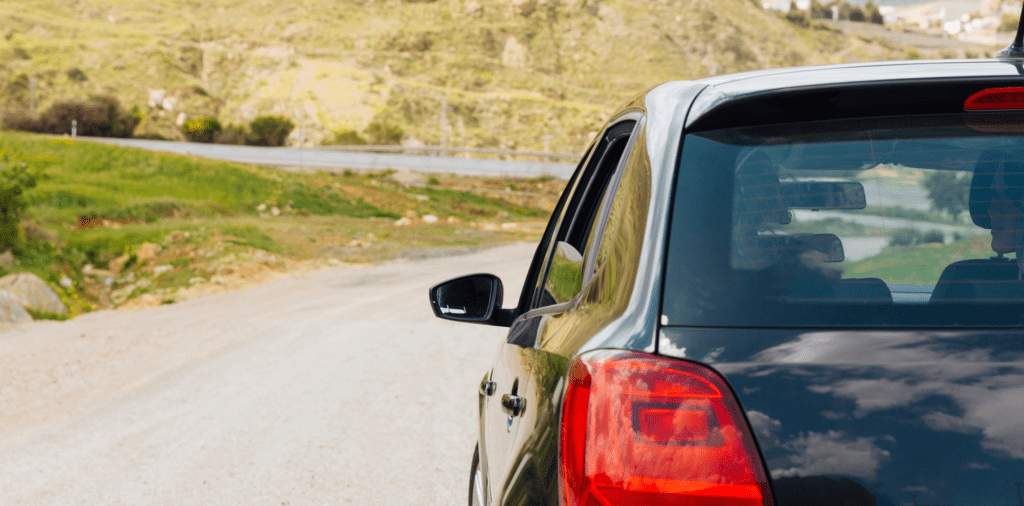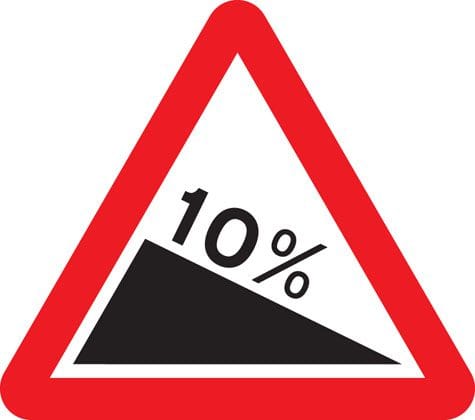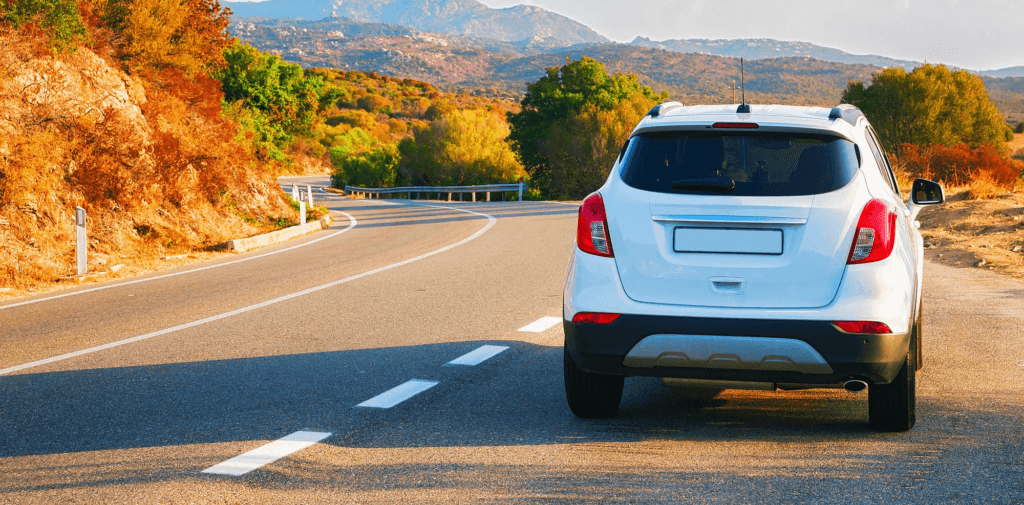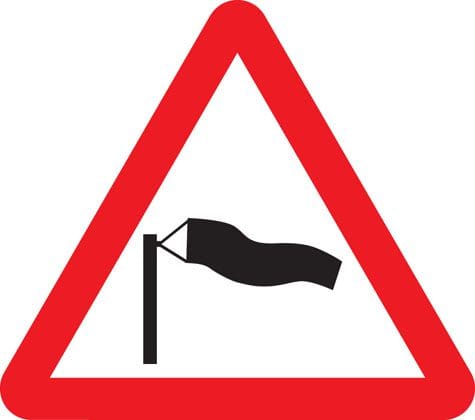
Hill starts can be a challenging task for new learner drivers, including in an automatic car. Whether you’re frequently encountering hills during your driving lessons or only occasionally, mastering this skill is crucial.
Today, many cars are equipped with hill start assist, but it’s essential to know the proper technique regardless.
Relying solely on technology can be risky, and you might find yourself in a car without this feature. Feeling anxious about pulling away on a slope, or unsure about the technique?
This blog post is here to help. By the end, you should feel more confident and knowledgeable about tackling hill starts in an automatic vehicle.
What is a Hill Start?
Definition of a Hill Start
A hill start is a driving manoeuvre that involves starting to move your vehicle from a stationary position on a slope.
This situation can be challenging because gravity tends to pull the car backwards when you’re trying to move forward.

Mastering hill starts is essential for safe driving, especially in hilly or mountainous areas.
Importance of Hill Starts in Driving
Hill starts are a crucial skill for any driver. They test your control over the vehicle and your ability to coordinate the use of the accelerator, brake, and, in manual cars, the clutch.
Hill starts are particularly important for learner drivers as they instil confidence and ensure safety on the roads.
Knowing how to execute a hill start properly prevents your car from rolling backwards and potentially causing an accident or damaging the vehicle behind you.
Differences Between Hill Starts in Manual and Automatic Cars
In a manual car, hill starts require the use of the clutch pedal in addition to the brake and accelerator.
This involves finding the right balance between the clutch and accelerator to prevent stalling or rolling back.
In contrast, automatic cars simplify the process because they lack a clutch pedal. Instead, the vehicle’s transmission manages the gear shifts, allowing the driver to focus on the brake and accelerator pedals.
This makes hill starts in automatic cars generally easier and more accessible for novice drivers.
Common Situations Requiring Hill Starts
There are numerous situations where a hill start is necessary. These include:
- Traffic lights on an incline: When you stop at a red light on an uphill slope, you’ll need to perform a hill start once the light turns green.
- Stop signs on a hill: Similar to traffic lights, you might encounter stop signs on inclines where you need to halt completely before moving again.
- Parking on a slope: When you park your car on a hill, starting the car and moving away from the parking spot requires a hill start.
- Roundabouts and junctions on slopes: These can often be found in hilly areas, requiring precise control to avoid rolling back.
Benefits of Mastering Hill Starts
Becoming proficient at hill starts offers several benefits:
- Increased confidence: Mastering this skill can boost your overall driving confidence, especially in hilly regions.
- Safety: Properly executed hill starts prevent accidents and ensure the safety of you and other road users.
- Vehicle preservation: Reducing the risk of rolling back helps prevent damage to both your vehicle and those around you.
- Smooth driving experience: Competence in hill starts contributes to a smoother and more controlled driving experience.
How Do You Do an Uphill Hill Start in an Automatic Car?
Preparing Your Vehicle
Before attempting a hill start, it’s crucial to prepare your vehicle properly. Ensure that your car is in good working condition and that the brakes, handbrake (parking brake), and accelerator are functioning correctly.

Check your surroundings and make sure there are no obstacles or vehicles close behind you.
Engaging the Handbrake
When you come to a stop on an incline, the first step is to engage the handbrake.
The handbrake is essential in preventing your car from rolling backwards. In most automatic cars, the handbrake is either a lever located between the front seats or a button on the dashboard.
Pull up the lever or press the button firmly to engage the handbrake. This will lock the rear wheels and hold the car in place.
Moving Your Foot from Brake to Accelerator
With the handbrake engaged, you can now focus on transitioning from the brake pedal to the accelerator. Here’s how to do it:
- Press the brake pedal firmly with your right foot to keep the car stationary.
- Shift your car into drive (D). This ensures that the car is ready to move forward when you press the accelerator.
- Move your right foot from the brake pedal to the accelerator. Do this smoothly and steadily to avoid any sudden movements.
Releasing the Handbrake Smoothly
As you begin to press down on the accelerator, you need to release the handbrake simultaneously. This requires coordination to ensure a smooth transition. Follow these steps:
- Gently press the accelerator: Start pressing down on the accelerator pedal with your right foot. Do this gradually to build up enough power to move the car forward without causing it to jerk.
- Release the handbrake: As you press the accelerator, slowly release the handbrake. If you’re using a lever, lower it gently; if it’s a button, press it to disengage.
- Balance the controls: The goal is to find a balance where the car begins to move forward as the handbrake is fully released. This might take a bit of practice to perfect, but with time, it will become second nature.
Maintaining Control and Speed
Once you’ve successfully moved off from the hill, it’s crucial to maintain control and manage your speed effectively. Here are some tips:
- Steady acceleration: Continue to press the accelerator smoothly to gain speed. Avoid sudden or harsh acceleration, as this can cause the car to lurch forward.
- Monitor your surroundings: Keep an eye on the road ahead and behind you. Be aware of other vehicles and potential obstacles.
- Use the brakes as needed: If you need to slow down or stop, apply the brakes gently. In an automatic car, the transmission will downshift to help control the speed, so you don’t need to worry about changing gears manually.
- Stay calm: Especially as a learner driver, staying calm and composed is essential. Practise hill starts in a safe and controlled environment until you feel confident.
By following these steps and practising regularly, you can master the skill of hill starts in an automatic car, ensuring a safer and more confident driving experience.
Will an Automatic Car Roll Back on a Hill?
Understanding the Rollback Phenomenon
Rollback occurs when a car moves backward unintentionally while attempting to start moving forward on an incline.
In automatic cars, this is less common compared to manual cars, but it can still happen, especially if the car is older or lacks modern safety features.

Rollback is influenced by gravity, the steepness of the hill, and how quickly the driver can transition from the brake to the accelerator. Understanding how rollback happens can help you anticipate and prevent it.
Modern Automatic Car Features to Prevent Rollback
Many modern automatic cars come equipped with features designed to prevent rollback. These include hill start assist and other traction control systems that help maintain the vehicle’s position on a slope.
These technologies provide a buffer time between releasing the brake and pressing the accelerator, ensuring the car remains stationary for a short period.
Familiarising yourself with your car’s features can significantly reduce the chances of rollback.
Role of Hill Start Assist Systems
Hill start assist systems are a common feature in newer automatic cars. This system temporarily holds the brakes after you release the brake pedal, giving you a few seconds to press the accelerator and start moving forward.
This prevents the car from rolling back. Hill start assist is particularly useful for learner drivers, as it adds an extra layer of security and eases the stress of performing hill starts.
Knowing how to activate and use this feature can make hill starts much smoother and safer.
Adjusting to Older Automatic Cars
If you’re driving an older automatic car, it may not have advanced features like hill start assist. In such cases, you need to rely more on your driving skills. Here are a few tips:
- Use the handbrake effectively: Engage the handbrake to hold the car in place while you prepare to move.
- Quick foot transition: Practise moving your foot quickly but smoothly from the brake to the accelerator.
- Anticipate the incline: Be extra cautious and anticipate the need for a hill start when approaching an incline, preparing yourself mentally and physically.
Practising to Build Confidence
Practicing hill starts regularly can significantly build your confidence and improve your technique.
Find a quiet, sloped area where you can practice without pressure. Start with gentle inclines and gradually move to steeper hills as you become more comfortable.
Practice using the handbrake and transitioning between pedals smoothly. The more you practise, the more intuitive and second nature these actions will become, reducing anxiety and enhancing your control over the car.
How Do You Do a Downhill Hill Start in an Automatic Car?
Preparing Your Vehicle
Before you start your downhill hill start, ensure your vehicle is properly prepared. Check that your brakes and tyres are in good condition, as they play a crucial role in controlling your descent.
Make sure your mirrors are adjusted for optimal visibility, and your seatbelt is fastened.

Image source: Open Government Licence v3.0
Understanding the road conditions and ensuring your vehicle is ready can make the process smoother and safer.
Applying the Brake
When preparing for a downhill hill start, the first step is to firmly apply the brake. This prevents the car from rolling forward uncontrollably.
Keep your right foot on the brake pedal to maintain control and prevent movement.
This step is crucial to ensure that you can transition smoothly to the next steps without losing control of the vehicle.
Shifting to Drive or Low Gear
Next, shift your car into drive (D) or, if your car has one, a low gear (L). Using a low gear can help control your speed more effectively when descending steep hills by providing additional engine braking.
This reduces the reliance on your brakes and helps maintain a safer and more controlled descent.
Ensure you understand your car’s gear options and use the one that best suits the steepness of the hill.
Gradually Releasing the Brake
Once you’re in the appropriate gear, begin gradually releasing the brake. This should be done smoothly to prevent the car from jerking forward.
Start by easing off the brake slightly to allow the car to start moving. Continue to release the brake gradually while monitoring your speed and ensuring you remain in control.
If your car starts to gain too much speed, press the brake gently to slow down.
Controlling Your Descent
Controlling your descent is critical during a downhill hill start. Use a combination of the brake and engine braking to maintain a safe and steady speed.
Avoid riding the brake continuously, as this can cause overheating and reduce braking efficiency.
Instead, use short, controlled bursts of braking as needed. Keep a safe distance from the vehicle in front of you and be prepared for any sudden stops or obstacles.
Tips for a Smooth Hill Start in an Automatic
Keeping Calm and Composed
One of the most important aspects of performing a smooth hill start is maintaining your composure.
It’s easy to become anxious, especially as a learner driver, but staying calm can significantly improve your performance.
Take deep breaths and remind yourself that with practice, hill starts will become a routine part of your driving skills.
Remaining calm helps you to think clearly and execute each step accurately, reducing the risk of mistakes.

Using the Right Amount of Acceleration
Applying the right amount of acceleration is crucial for a smooth hill start. Pressing the accelerator too hard can cause the car to surge forward, while too little pressure might not provide enough power to overcome the incline.
Aim for a gradual and controlled application of the accelerator. Listen to your car and feel the response; it should begin to move forward smoothly without jerking or stalling.
Listening to Your Engine
Your engine can give you valuable feedback during a hill start. The sound and vibration can indicate whether you’re applying the correct amount of power.
If the engine revs too high, you might be pressing the accelerator too much. Conversely, if it feels like the car is struggling, you may need to increase the pressure slightly.
Developing an ear for these cues can help you adjust your technique in real-time.
Practicing in Different Conditions
Practicing hill starts in various conditions will prepare you for real-world scenarios.
Try different inclines, from gentle slopes to steeper hills, and practice in various weather conditions like rain or even light snow.
This will help you understand how your car behaves in different situations and improve your ability to perform hill starts smoothly regardless of the environment.
The more you practice, the more confident and proficient you’ll become.
Understanding Your Vehicle’s Features
Modern cars come equipped with various features that can assist with hill starts. Familiarise yourself with these features to make your driving experience easier.
For example, many automatic cars have hill start assist systems that temporarily hold the brake as you move your foot to the accelerator, preventing rollback.
Understanding how to use these features can make a significant difference in your ability to perform a hill start smoothly.
Common Hazards to Look Out for When Doing a Hill Start
Slippery Road Surfaces
Slippery road surfaces, such as those caused by rain, ice, or oil spills, can make hill starts more challenging.
Reduced traction increases the risk of your wheels slipping, which can result in losing control of the vehicle.
Always ensure your tyres are in good condition and drive cautiously in adverse weather.
If you encounter a slippery surface, apply the accelerator gently to avoid wheel spin.

Image source: Open Government Licence v3.0
Heavy Traffic Situations
Performing a hill start in heavy traffic can be stressful, as there’s less room for error. Cars may be closely packed, leaving little margin for rollback.
It’s essential to be extra cautious and patient. Engage the handbrake firmly and ensure you have a clear path before attempting to move.
Being aware of the traffic around you and anticipating their movements can help you navigate these situations safely.
Inexperienced Drivers Around You
Inexperienced drivers can add to the complexity of a hill start. They might stop unexpectedly or struggle with their own hill starts, which can disrupt the flow of traffic and increase the risk of collisions.
Keep a safe distance from other vehicles and be prepared for sudden movements. Patience and vigilance are key when driving in the presence of less experienced drivers.
Sudden Stops by Other Vehicles
Sudden stops by other vehicles can occur for various reasons, such as pedestrians crossing the road, traffic signals changing, or drivers hesitating on an incline.
These unexpected stops can force you to react quickly and perform another hill start. Always maintain a safe following distance and stay alert to the actions of the vehicles ahead. This will give you more time to respond safely.
Limited Visibility and Blind Spots
Limited visibility and blind spots are significant hazards during hill starts. On a slope, your view of the road ahead may be obstructed, and other drivers might not see you clearly.
Ensure your mirrors are correctly adjusted and use your indicators to signal your intentions. Be particularly cautious at night or in adverse weather conditions where visibility is further reduced.
Being aware of your surroundings and ensuring others can see you is crucial for safe hill starts.
Frequently asked questions
A hill start is when you move off from a stationary position on a slope or incline. It’s an essential skill for safe driving.
Knowing how to do a hill start in an automatic car ensures you can confidently and safely start your car on an incline without rolling backwards.
Ensure your car is in Drive (D) mode, your foot is on the brake pedal, and your handbrake (if applicable) is engaged.
Keep your foot firmly on the brake pedal and release the handbrake if it is engaged.
With your foot on the brake pedal, slowly move your right foot to the accelerator pedal and apply gentle pressure.
If your car has hill-hold assist, it will automatically hold the brake for a few seconds after you release the brake pedal, giving you time to press the accelerator.
As you press the accelerator, you’ll feel the car start to move forward. Gradually release the brake pedal at this point.
Quickly but smoothly reapply the brake pedal and try again, ensuring you give enough power to the accelerator.
Using the handbrake can provide extra security, especially on steeper inclines. Engage it before you start and release it once you begin to move forward.
Apply gentle but steady pressure to the accelerator to avoid excessive revving or abrupt movements.
Yes, practicing on a flat surface helps you get a feel for smoothly transitioning from the brake pedal to the accelerator.
The Start-Stop system will restart the engine when you release the brake pedal. Ensure you are ready to press the accelerator immediately.
Yes, some automatic cars have different features like hill-hold assist or different sensitivity in the accelerator pedal. Refer to your car’s manual for specifics.
Generally, hill starts are easier in automatic cars because there’s no need to balance the clutch and accelerator.
Practice regularly in safe, controlled environments. Start on smaller inclines and gradually work your way up to steeper hills as your confidence grows.



